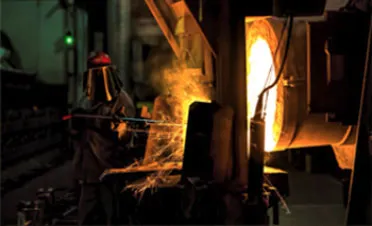Understanding the Cost Breakdown of Die Casting per Kilogram
Understanding Die Casting Costs Per Kilogram
Die casting has emerged as a significant manufacturing process in the production of metal parts, widely utilized across numerous industries including automotive, aerospace, and consumer goods. As industries increasingly look to optimize production efficiency and reduce costs, understanding the cost structure of die casting, particularly the cost per kilogram of die cast components, becomes essential.
What is Die Casting?
Die casting is a manufacturing process where molten metal is injected under high pressure into a mold cavity. This process allows for the creation of complex shapes with smooth surfaces and tight tolerances. Common metals used in die casting include aluminum, zinc, magnesium, and copper alloys. The efficiency of die casting is one of its many attractive features, making it a preferred method for producing large quantities of parts with consistent quality.
Components of Cost in Die Casting
The cost per kilogram in die casting can be influenced by a variety of factors. Understanding these factors is crucial for businesses looking to estimate production costs accurately
1. Material Costs The type of metal used can significantly affect production costs. Aluminum is typically cheaper than copper, while zinc is even less expensive but may not suit applications requiring high strength. Prices fluctuate based on market conditions, necessitating continuous monitoring for manufacturers.
2. Die Costs The molds used in die casting, known as dies, are integral to the process. They are often made from high-quality steel and can require substantial initial investment. The longevity and durability of the die affect how many parts can be produced over its lifespan, which, in turn, impacts the cost per kilogram. High-quality dies can produce thousands or even millions of units, spreading the initial cost over a larger number of parts.
3. Production Volume Economies of scale play a critical role in die casting. The more parts produced in a single die-casting run, the lower the cost per kilogram due to the fixed costs of the die being distributed across a larger output. For manufacturers, understanding their production volume needs helps in planning and cost estimation.
4. Labor Costs While die casting is largely automated, skilled labor is still necessary for setup, maintenance, and quality control. Labor costs can vary by region and impact the total production costs.
die casting cost per kg

5. Overhead Costs Any indirect costs incurred during the production process, including utilities, rent, and administrative expenses, must also be factored into the overall cost of the die casting process.
6. Finishing Processes Post-casting processes such as trimming, machining, surface treatment, and painting can significantly affect the cost of finished products. The necessary finishes depend on the intended use of the part, with more intricate finishes leading to higher costs.
Cost Analysis
To illustrate the cost per kilogram in die casting, consider an example where the following costs are identified
- Material cost $5/kg (for aluminum) - Die cost Totaling $50,000, assuming it produces 100,000 parts - Labor cost $2/kg - Overhead and finishing costs $1/kg
Calculating the total cost illustrates how essential each component is to the overall cost structure
1. Material Cost $5,000 (for 1,000 kg of material) 2. Die Cost $0.50 (covering the die cost per part) 3. Labor Cost $2,000 (for the production batch) 4. Overheads $1,000 (for supporting services)
Total cost for the run can be broken down and then averaged to find the cost per kilogram, demonstrating how efficiency and economies of scale directly reduce production costs.
Conclusion
Understanding die casting costs per kilogram is vital for businesses in competitive markets. By analyzing the components of cost and their influence on the overall production process, manufacturers can make informed decisions to optimize operations, minimize expenses, and enhance profitability. In an era of rapid technological advancement and increasing demand for precision and quality, a thorough grasp of die casting costs is essential for sustainable growth and innovation in manufacturing.
-
OEM Sand Cast Pump Valve Fittings - Baoding Hairun | Precision Engineering, CustomizableNewsJul.30,2025
-
OEM Sand Cast Pump Valve Fittings - Baoding Hairun Machinery And Equipment Trading Co., Ltd.NewsJul.30,2025
-
OEM Sand Cast Pump Valve Fittings - Baoding Hairun Machinery And Equipment Trading Co., Ltd.NewsJul.30,2025
-
OEM Sand Cast Pump Valve Fittings - Baoding Hairun Machinery|Precision Engineering&Fluid ControlNewsJul.30,2025
-
OEM Sand Cast Pump Valve Fittings - Baoding Hairun Machinery And Equipment Trading Co., Ltd.NewsJul.30,2025
-
OEM Sand Cast Pump Valve Fittings-Baoding Hairun Machinery And Equipment Trading Co., Ltd.NewsJul.30,2025















